Can current transformers (CTs) pick up signals from adjacent CTs or adjacent conductors?
Yes.
How much crosstalk exists between CTs on different conductors?
Since current transformers measure magnetic fields (analog) and communicate the resulting measurement as an analog voltage, there will always be some crosstalk. The goal is to keep this low enough that it is negligible. We have found the crosstalk can be broken into three types:
- Adjacent conductor: This is the situation where a CT senses the magnetic field from a conductor outside of the CT. In our testing, this is the most common and largest form of crosstalk.
- Adjacent CT: Current transformers distort the magnetic field nearby and can therefore affect the readings on nearby CTs. Generally, this effect is small.
- Lead wire: If the lead wires from CTs are in close proximity, they can theoretically interfere.
Overview
In the discussions of crosstalk, in all cases, the active CT will be around a conductor carrying 100% of the rated CT current. The test CT (the one on which we are measuring the crosstalk) will not be around any conductor, so the current flowing through the CT is zero amps. The amount of crosstalk in the test CT is reported as a percentage of the full-scale reading of the active CT.
Adjacent Conductor Crosstalk
The risk of adjacent conductor crosstalk is highest when conductors are packed close together. This most commonly occurs in the conductors (wires) coming out of low-current (less than 100A) circuit breakers. Therefore, we investigated the crosstalk for the CTML Series and Accu-CT® ACTL Series current transformers.
CTML Series Results
- Maximum Crosstalk: 7%
- Distance for less than 0.1% Crosstalk: approximately 2 inches, provided that the CT lead wires are oriented away from the adjacent conductor. Approximately 4.5 inches if the CT lead wires are oriented towards the adjacent conductor.
Testing with a CTM-0360-050 shows adjacent conductor crosstalk of up to 7% of the full-scale reading if the test CT is placed in direct contact with the adjacent conductor. The effect varies, depending on the orientation. To get the crosstalk down to 0.1% of full-scale requires a separation of 2 to 4.5 inches from any adjacent conductors.
ACTL Series Results
- Maximum Crosstalk: 0.15%
- Distance for less than 0.1% Crosstalk: approximately 0.5 inches
Testing with an ACTL-0750-100 shows minimal adjacent conductor crosstalk of up to 0.15% of the full-scale reading if the test CT is placed in direct contact with the adjacent conductor.
Adjacent CT Crosstalk
When testing the crosstalk due an adjacent active CT, there must also be an adjacent conductor providing current through the active CT. Therefore, the measurement becomes the additional crosstalk due to placing the test CT near a conductor AND near the active CT. In our testing, there was no significant increase in the crosstalk due to the addition of the active CT (compared to the crosstalk from an adjacent conductor by itself).
Lead Wire Crosstalk
In practice, the voltages and currents on the lead wires are so low that this effect is negligible. More specifically, our standard CTs have a full-scale output voltage of only 0.333 Vac and a current of only 29 microamps (when connected to a WattNode® meter). Our testing showed lead wire crosstalk values of 0.1% or less.
Recommendations
If high accuracy is a concern or if you have closely packed conductors with very different current levels, then crosstalk should be a concern. The best recommendation is to use a high accuracy CT like our Accu-CT® ACTL Series current transformers. These showed negligible crosstalk, which can be eliminated with 0.5 inch spacing to adjacent conductors.
The CTML series current transformers exhibit high crosstalk if they are placed in direct contact with adjacent conductors, so they should only be used in cases where the crosstalk will not cause problems or where the conductors can be spaced 2+ inches apart.
If you are using models of CTs not covered by this article and are concerned about crosstalk, contact CCS for more information.


